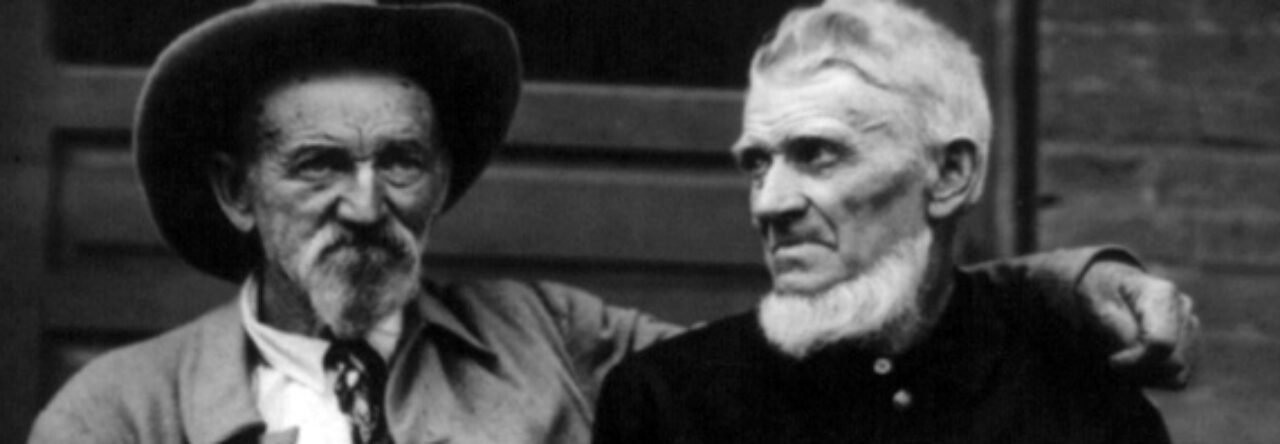Life & Family
In late 1860 South Carolina Governor Gist William Henry Gist referred to the “John Brown Pike” in his message to the state legislature. As the Charleston (SC) Mercury reported, Ruffin gave this pike to South Carolina to display in January 1860 and included a note which read in part: “Sample of the favors designed for us by our NORTHERN BRETHREN.” When John Brown attacked Harpers Ferry in October 1859, he brought pikes with him as a way to arm the slaves who rebelled.
Sources
Key primary sources include Ruffin’s The Political Economy of Slavery (1857), William K. Scarborough’s three volume Diary of Edmund Ruffin (1972-89), and David F. Allmendinger’s Incidents of My Life: Edmund Ruffin’s Autobiographical Essays (1990). Ruffin also wrote a number of other books and pamphlets, including Agricultural, Geological, and Descriptive Sketches of Lower North Carolina, and the Similar Adjacent Lands (1861). In addition, the Bland-Ruffin Papers at the Library of Virginia has some of Ruffin’s correspondence from the Civil War. These letters “document Ruffin’s unflagging support of the Confederacy,” as the finding aid notes. The Library of Virginia also has the diary that Ruffin used between 1841-1851. In addition, the Southern Historical Collection at UNC has Edmund Ruffin Jr’s Journal (1851-1862, 1866-1873). Other studies on Ruffin’s life include Betty L. Mitchell’s Edmund Ruffin: A Biography (1981) and David F. Allmendinger’s Ruffin: Family and Reform in the Old South (1990). Several historians have focused their research on Ruffin’s role in the secession crisis: Avery O. Craven, Edmund Ruffin, Southerner: A Study in Secession (1932), Eric H. Walther’s The Fire-Eaters (1992), and Kenneth L. Smith’s “Edmund Ruffin and the Raid on Harper’s Ferry.” Virginia Cavalcade (1972). In addition, the online Encyclopedia Virgina has an entry on Ruffin. For more information about John Brown’s raid on Harpers Ferry in October 1859, see Paul Finkelman’s His Soul Goes Marching On: Responses to John Brown and the Harpers Ferry Raid (1995) and David S. Reynolds’ John Brown, Abolitionist: The Man Who Killed Slavery, Sparked the Civil War, and Seeded Civil Rights (2005).
Places to Visit
You can visit Harpers Ferry National Historical Park in West Virginia and see John Brown’s fort and the historic town. In addition, the Kennedy Farmhouse is only about 30 minutes from Harpers Ferry. The farmhouse, which became a National Historic Landmark in 1973, is the place where Brown’s raiders launched their attack on Harpers Ferry. In addition, a historical marker notes the location in Charles Town, West Virginia where Brown was executed in December 1859. Ruffin’s plantation (Marlbourne) was located in Hanover County, Virginia and it became a National Historic Landmark in 1964. While Ruffin was buried at his estate, a historical marker for his grave is located near Mechanicsville in Virginia.
Artifacts
A number of institutions have one of Brown’s pikes in their collection, including the National Civil War Museum in Harrisburg, Pennsylvania, the Jefferson County Historical Society in West Virginia, and the National Museum of American History. In addition, the National Museum of American History has “John Brown’s Sharps Rifle” and another rifle seized during the attack on Harpers Ferry.
Images
Ruffin watched John Brown’s execution on December 2, 1859 in Charlestown, Virginia with cadets from the Virginia Military Institute. A drawing of the VMI Cadet Guard at Charlestown is online at the Encyclopedia Virgina. The image is originally from the Virginia Military Institute Archives.


Leave a Reply